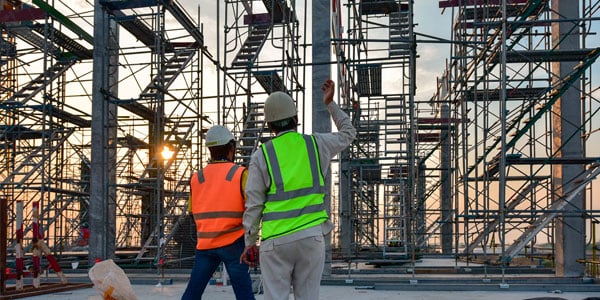Smart Lighting Automation: A Bright New Future the world of lighting is evolving faster than ever. From the traditional incandescent bulb to the rise of energy-efficient LEDs, lighting has made some impressive leaps. However, one of the most exciting advancements in recent years is the development of smart lighting automation. This technology is transforming how we interact with light, offering not only convenience but also energy savings, enhanced security, and improved comfort.
In this article, we will explore what smart lighting automation is, how it works, and the numerous benefits it offers. We will also look into how this technology is poised to revolutionize our homes, offices, and public spaces.

What is Smart Lighting Automation?
At its core, smart lighting automation involves the use of advanced technologies to control lighting in an intelligent, automated manner. Rather than manually flipping switches or adjusting light levels, smart lighting systems use sensors, timers, and connectivity to control lighting based on specific needs, preferences, and schedules. These systems often integrate with other smart home technologies, allowing them to function in sync with devices such as thermostats, security cameras, and voice assistants.
The key feature of smart lighting automation is its ability to adjust light according to various factors such as time of day, occupancy, natural light, and even user behavior. The system can learn and adapt to the habits of the people in the space, making it more efficient and user-friendly.
How Does Smart Lighting Automation Work?
Smart lighting automation relies on several components working together to create an intelligent lighting environment. Let’s break down the core elements:
1. Sensors
Sensors are integral to smart lighting automation. These devices detect motion, light levels, temperature, and even humidity. For instance, motion sensors can trigger lights to turn on when someone enters a room and off when they leave. Similarly, light sensors can measure the amount of natural light in a room and adjust artificial lighting accordingly, ensuring that the space is always optimally lit without wasting energy.
2. Connectivity
Connectivity is another essential component of smart lighting automation. Most smart lighting systems are connected to a home or building’s Wi-Fi network, allowing them to be controlled remotely via smartphones, tablets, or voice commands. The system may also integrate with other smart home devices like security systems, thermostats, and smart assistants such as Amazon Alexa or Google Assistant.
This interconnectivity enables lighting systems to adjust based on other variables. For example, when a smart thermostat detects a change in temperature, the lights may adjust accordingly to provide additional comfort or ambiance.
3. Control Systems
The control systems are the brains behind smart lighting automation. These can range from apps on a smartphone to voice-controlled platforms like Alexa or Google Home. The system allows users to manually control the lights, create schedules, and set routines. For instance, you can schedule your lights to turn on at sunset or dim as you watch a movie in the evening.
4. Artificial Intelligence (AI)
Some advanced smart lighting automation systems even incorporate artificial intelligence (AI). AI can analyze patterns in how the system is used and optimize the lighting experience accordingly. Over time, AI can learn your preferences and make autonomous adjustments based on time of day, activity, or even mood.
For example, if the system notices that you always adjust the lighting to a particular setting before going to bed, it might automatically make that adjustment without your input. This intelligent automation makes the system more intuitive and responsive to your needs.
Benefits of Smart Lighting Automation
The rise of smart lighting automation offers a wealth of benefits, making it an appealing option for both residential and commercial spaces. Let’s explore some of the key advantages.
1. Energy Efficiency
One of the most significant advantages of smart lighting automation is its ability to improve energy efficiency. Traditional lighting systems often waste energy by staying on when they’re not needed. Smart lighting systems, however, can adjust lighting based on occupancy, time of day, and even ambient light levels.
For example, if no one is in a room, motion sensors can turn the lights off automatically. If there’s enough natural light coming through the windows, the system can dim the artificial lights accordingly. This level of automation helps reduce energy consumption and lowers electricity bills.
2. Convenience
The convenience factor of smart lighting automation cannot be overstated. No longer do you need to fumble for light switches or remember to turn off the lights when you leave a room. The system can handle everything automatically. Additionally, the ability to control your lights remotely via smartphone or voice commands adds another layer of ease.
Imagine walking into your home on a dark evening and having the lights turn on as soon as you step inside. Or, using voice commands to adjust the lighting for different activities, such as reading, cooking, or watching a movie. These are just a few examples of the convenience that smart lighting automation offers.
3. Enhanced Security
Smart lighting automation also enhances security. Automated lighting systems can simulate occupancy by turning lights on and off at random intervals, creating the illusion that someone is home even when they’re not. This can be especially useful when you’re away on vacation or working late.
Motion sensors can trigger lights to turn on when someone enters your home or yard, helping to deter potential intruders. Similarly, smart lights can be integrated with security cameras to provide better visibility of your property.
4. Improved Comfort
Lighting has a significant impact on how we feel in a space. Smart lighting automation allows you to create the perfect ambiance for any occasion. Whether you need bright lighting for cooking or a soft, warm glow for a cozy evening, smart lighting systems can adjust to meet your needs.
The system can also automatically adjust the lighting based on the time of day, making your space more comfortable and welcoming. For example, in the morning, the lights might gradually brighten to simulate sunrise, gently waking you up. At night, the lights might dim to promote relaxation and sleep.
5. Cost Savings
While smart lighting automation systems may have an initial investment cost, they offer significant savings over time. Energy-efficient LED lights, combined with smart automation features, can drastically reduce electricity consumption. Furthermore, the longer lifespan of LED bulbs means fewer replacements and reduced maintenance costs.
6. Environmental Benefits
In today’s world, sustainability is more important than ever. Smart lighting automation contributes to environmental efforts by reducing energy consumption and minimizing carbon footprints. The ability to optimize lighting based on occupancy and natural light reduces unnecessary energy usage, which is a step toward a more eco-friendly future.
How Smart Lighting Automation is Revolutionizing Residential Spaces
In homes, smart lighting automation is quickly becoming a standard feature. It not only adds convenience and energy savings but also enhances the overall home experience.
1. Personalized Lighting Control
One of the key benefits for homeowners is the ability to personalize lighting settings. You can set up specific routines or “scenes” for various activities. For example, you might set a “movie mode” that dims the lights and adjusts the color temperature to create the perfect cinematic atmosphere. Or, you might set a “wake-up mode” that gradually brightens the lights in the morning to simulate natural sunlight.
2. Smart Integration with Other Devices
Smart lighting systems don’t operate in isolation; they can be integrated with other smart devices in the home. Imagine having your smart thermostat adjust the temperature when you enter a room, while the lighting adjusts to your preferred setting. Or, using voice commands to control both the lights and your smart entertainment system.
3. Energy-Saving Features
In the home, smart lighting automation helps homeowners save on electricity bills. For example, if you forget to turn off the lights when you leave the house, your smart system can do it for you. The system can also monitor energy usage and alert you to any inefficiencies.
Smart Lighting Automation in Commercial Spaces
The benefits of smart lighting automation are not limited to homes. Commercial spaces, including offices, retail stores, and industrial settings, are also experiencing a transformation thanks to smart lighting technology.
1. Workplace Productivity
In offices, lighting plays a crucial role in employee productivity and well-being. Smart lighting automation allows employers to adjust lighting based on the time of day or activity. Research has shown that proper lighting can boost focus and reduce eye strain, making smart lighting a valuable tool for improving workplace efficiency.
2. Retail Environments
In retail settings, lighting is used not just for illumination but also for creating ambiance and attracting customers. Smart lighting automation allows stores to adjust lighting in different areas of the store based on foot traffic, the time of day, or even sales promotions.
3. Energy Management in Large Buildings
In large commercial buildings, smart lighting automation helps manage energy use efficiently. The ability to monitor and control lighting across multiple floors or areas can reduce overall energy consumption, lowering costs and contributing to sustainability goals.
The Future of Smart Lighting Automation
As technology continues to evolve, the possibilities for smart lighting automation are endless. The integration of AI, machine learning, and IoT will further enhance the capabilities of smart lighting systems, making them more intuitive and adaptable than ever before. In the future, smart lighting will be an essential component of smart cities, contributing to sustainability, safety, and convenience.







